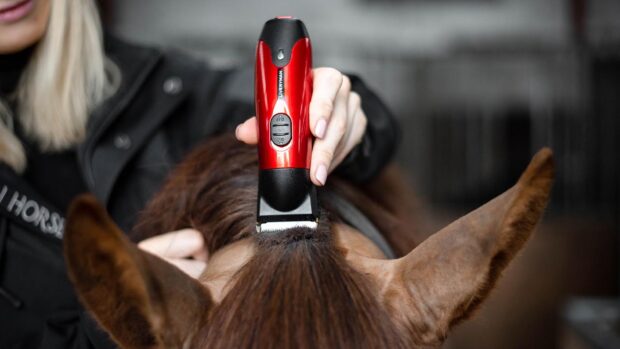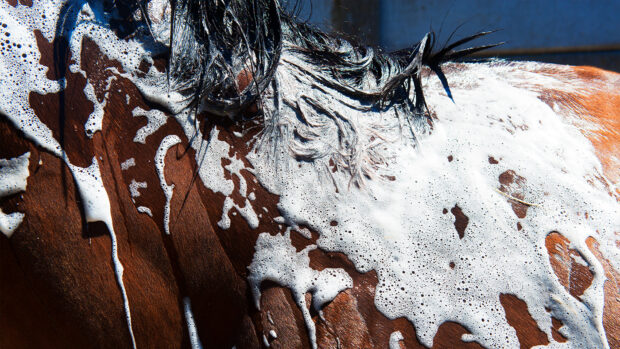Neck line
Tradition used to dictate seven or nine plaits along the neck and one for the forelock. Nowadays you can choose however many suit your horse, though too many tiny plaits can look fussy and too few thick ones tend to resemble a row of golf balls.
Clever plaiting can minimise some of your horse’s weak points. If he has a slightly weak neck, set the plaits on top of his neck to give an illusion of bulk.
The easy way to do this is to roll up the plaits tothe neck, but push back as you stitch them in place.
If his neck is too heavy, set them to the side as you stitch.A horse who is slightly short in the neck will look better with a larger number of plaits. On the other hand, if his neck is too long, using fewer plaits will make it look more in proportion.
Fashion styles
Traditional plaits are de rigeur for the show ring and acceptable for all disciplines. Dressage has its own fashions, notably mane plaits secured with white tape or plastic clips.
The technique with these is to plait down and secure the ends as usual, then fold rather than roll the plaits up and line up the tape or clips along the horse¨s neck.
Beautiful braids
Plaits can be practical as well as decorative. If you have a horse whose long mane sometimes gets in the way, a running or Spanish plait keeps it neat and looks good.
The Spanish plait uses the same technique as the running, but follows the line of the crest rather than curving down and round.
Plait as for a running plait, but keep it pulled tight from the base as you progress along the neck.
If your horse or pony has a particularly thick mane, you may prefer a double Spanish plait – part the mane down the centre so that an equal amount of hair falls down each side of the neck, and plait each side along the crest.
Tail plaiting
Plaiting a tail is even more of an art than plaiting a mane. The easiest type to plait is the full tail of a Thoroughbred type; cob types with thicker docks can be more difficult.
The hair at the dock must be long enough to start the plait. If your horse has a pulled tail that is growing out, you will have towait until the hair is an appropriate length.
There are two types of tail plait. The easiest is where the centre plait lies flat. The other is where it stands out in relief, which involves plaiting the sections underneath instead of over.
This often looks more attractive, but is more difficult to do until you get used to the technique.
Plaiting tips
When you get to the end of the plait, fasten it with aband. Roll up the plait up and secure with a second band.


